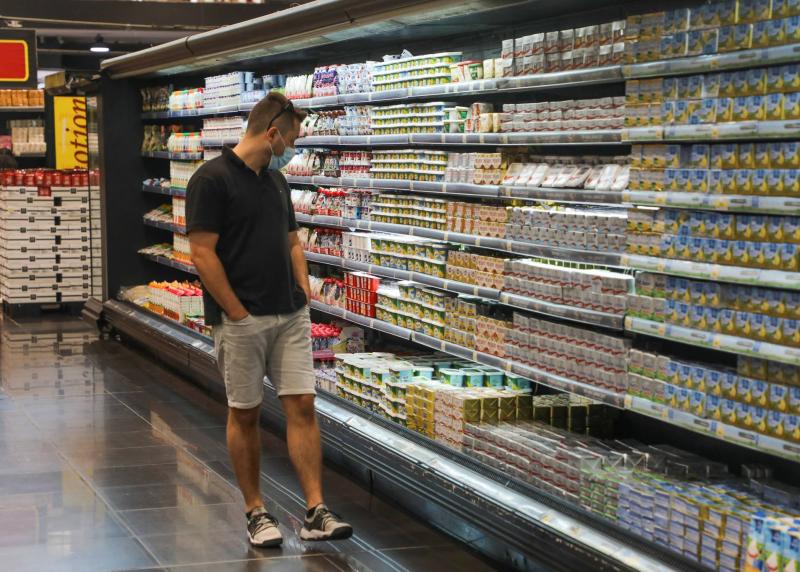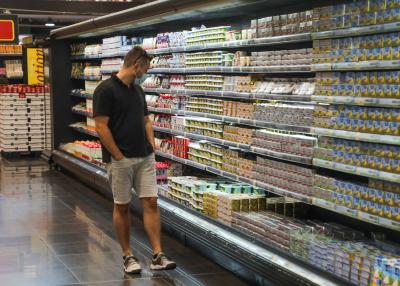Lebanon has moved to first place in the real inflation list during the first four months of the current year, with a food price change rate of 81%, compared to 35% recorded by Venezuela and 31% by Zimbabwe. Lebanon recorded the second highest nominal inflation rate for food prices worldwide, based on the annual change rate until the end of May. Cumulative inflation has exceeded 4250% during the ongoing economic collapse, although the general inflation index has shown a relative calm due to the temporary stability of the national currency’s value close to 93,000 LBP per dollar.
In recent developments, Lebanon officially joined the ranks of countries with hot hunger spots, as the classification of approximately 354,000 residents fell to the fourth level of food insecurity, just one level away from reaching a catastrophic situation or famine. Meanwhile, the category of those classified at the third level has expanded to encompass 42%, which is approximately 2.3 million individuals, including citizens and displaced persons.
Lebanon has joined El Salvador and Nicaragua on the list of 18 Hunger Hotspot Countries in 22 nations worldwide, which necessitate urgent humanitarian initiatives, according to United Nations assessments based on field surveys conducted jointly by the World Food Programme and the Food and Agriculture Organization, bolstered by forecasts of worsening economic and living crises in Lebanon due to ongoing political uncertainty and the continued deterioration of macroeconomic conditions.
The report highlighted that rising prices of basic goods are harming food security and the living conditions of Lebanese citizens and refugees, especially after the national currency lost more than 99% of its value against the US dollar in the parallel market since the onset of the crisis. The Lebanese economy recorded successive contractions due to ongoing crises, with GDP shrinking by 21.4% in 2020, 7% in 2021, and 2.6% in 2022, with projections indicating a 0.5% decline in GDP for the current year, according to World Bank estimates.
According to the updated food security report that monitors current realities and forecasts extending until the end of the third quarter of this year, certain hunger points are likely to experience severe deterioration in food insecurity levels, jeopardizing the lives and livelihoods of the population. Additionally, instances of food insecurity may worsen due to several interrelated factors such as conflict, organized violence, economic shocks, and climate variability. Rising inflation rates, difficulty accessing basic services, and increasing social tensions due to the economic crisis in Lebanon continue to exacerbate high poverty levels and food insecurity in the country.
New statistics show a notable increase in the number of those in urgent need of assistance in Lebanon, following the addition of about 300,000 residents classified within the third category of food insecurity during the past months of this year, bringing the total to approximately 2.3 million individuals, distributed between about 1.5 million Lebanese and around 800,000 displaced persons, the majority of whom are Syrians. Among this total, over 350,000 individuals have descended into the category of "hot hunger spot."
Thus, the percentage of those classified at risk of food crisis or worse has increased from 37% to about 42% of the total residents, according to the comparative statistics with the findings from the end of last year, which showed that about 37% of the total residents suffer from food insecurity, including 33% of Lebanese, approximately 1.29 million individuals, and 46%, around 700,000 individuals from Syrian refugees facing difficulties in food security.
The UN report notes that despite more than three years having passed since the beginning of the crisis, political discord remains a significant barrier to resolving the crisis. Moreover, the internal situation has remained unchanged since the completion of the parliamentary elections in 2022, leading to the conclusion that the current deadlock reduces the likelihood of reaching a new agreement with the International Monetary Fund.
The international classifications of food insecurity deterioration encompass five levels, starting from the minimal level of no significant deficiency, progressing to the second level of observable pressures that could escalate, reaching the third level defining the true crisis that Lebanon falls under, followed by the fourth level indicating a transition to an emergency phase experienced by a portion of residents in Lebanon. The fifth and final level merits the description of disaster or famine.




